I found this... you guys can argue it's authenticity if you want to - I'm just sharing it. I think Ivan used some of this in his earlier post...
I do agree that we need to be very careful about writting our own version of history in these pages when so many rely on us to provide facts and historical data about these items.
There is room for speculation, but it needs to be labled as such.
Here is a Wilkinson bladed sword that is VERY close to the one in question. It also features the Royal Cypher on the guard! Apparently British Observers always carried these as sidearms and confederate officers would pay top dollar to have one! Below is more text and the source...
I'd venture a hypothisis that the sword in question can be described as this one is...
Model 1822/1845 Infantry Field Officer's Sword. This sword is the modified version of the 1822 pattern when the folding guard was officially discontinued and the back of the blade became flat, opposed to the 1822 piped-back blade. This sword saw incredible service in the 19th century including the Crimean War, the American Civil War, Boer War (unofficially) and the Zulu, Australian, New Zealand and Indian Colonial Conflicts. It was officially replaced in 1897 with a new pattern Infantry sword.
However it continued to be used by some officers into the 20th century. During the American Civil War, not only did the British observers have this side arm but Confederate officers paid top dollar for one. One British observer noted in 1863: "In Houston, I myself saw an English regulation infantry sword exposed for sale for $225." Our price is in fact less today than its price over 130 years ago! Even the Mexican Army used this sword as early as the Battle of the Alamo.
The stories around this sword are too numerous for this short description. The sword itself has a gothic type hilt with a VR and crown (the Royal Cypher) on the guard. The brass backstrap/pommel piece is finely detailed, and is finished with a pommel nut at the top. The grip is imitation fish skin wrapped with twists of wire. In addition the 32 1/2 inch blade is masterfully etched with the appropriate devices. Completing the sword is its two ringed brass scabbard. The use of brass was reserved for field officers and steel for company grade officers.
http://www.militaryheritage.com/swords2.htm


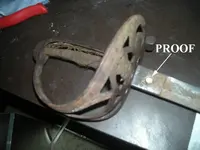
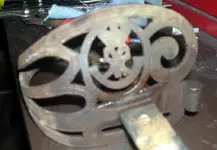
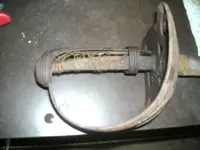

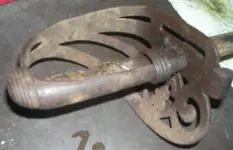
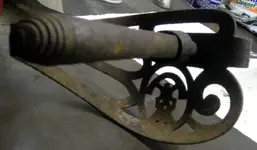
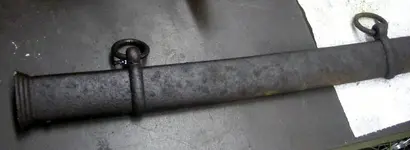


 nty
nty


